By Tyler Derksen
Last Thursday I had the privilege of attending a Flor de Caña rum tasting at Murrieta’s, hosted by enthusiastic Brand Ambassador Jeffrey Meyers. I’m going to level with you: I’m relatively new to the world of rum. Until recently, much of my experience has been limited to highballs, but I am thoroughly enjoying learning more about this surprisingly complex sugar cane-based spirit. For whatever reason, I have generally associated rum with two things: the Pirates of the Caribbean movie and the Caribbean islands (although now that I write this, I’m guessing the former informs the latter). Flor de Caña, however, is produced in the Central American country of Nicaragua, most definitely not an island or a Disney franchise of any kind.
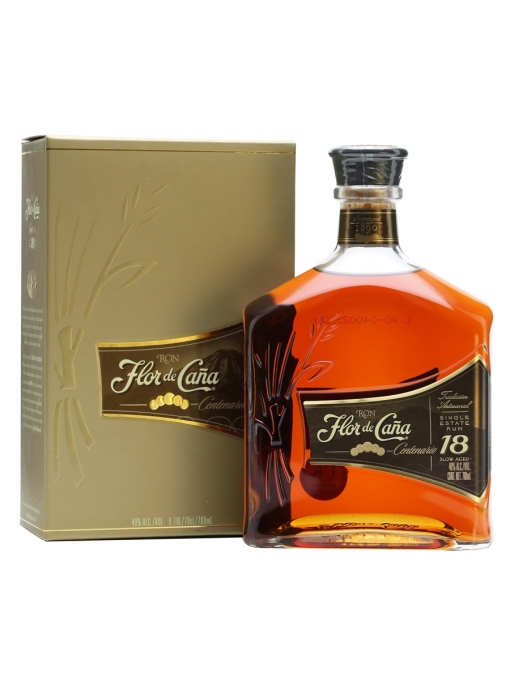
If you look closely, you’ll see the volcano… (Photo Credit: The Whisky Exchange)
Flor de Caña traces its roots back 125 years, when was founded by the Pellas family, who moved to Nicaragua from Italy in 1875. Originally intending to found a sugar cane plantation, the family began to distill spirit to celebrate the end of the harvest season with the area’s farmers. Their distillation facility is located at the base of the San Cristobal volcano, which is featured prominently on its label. Despite producing rum for local farmers for many years previous, it was not until 1937 that product from Flor de Caña became available for purchase by the public, and even then it was only in Nicaragua. The company now exports internationally, remains family-owned and is now on its fifth generation of rum producers, which is a remarkable feat in today’s age of beverage conglomerations.
The name Flor de Caña translates to “flower of the cane”, which is a tip-of-the-hat to the practice of harvesting the sugar cane for rum distillation when the flowers that grow on it bloom. Jeffrey Meyers took great pride in the Flor de Caña production process and emphasized that the distillery uses 100% molasses (a byproduct of the sugar refining process) for the production of its rum and does not use any added already-refined sugar. Before being aged in American white oak ex-bourbon barrels, the spirit is distilled five times (which is, I think, the most that I have heard of a spirit being distilled and would almost surely result in a nearly neutral spirit pre-barrel maturation). So, how does it taste?
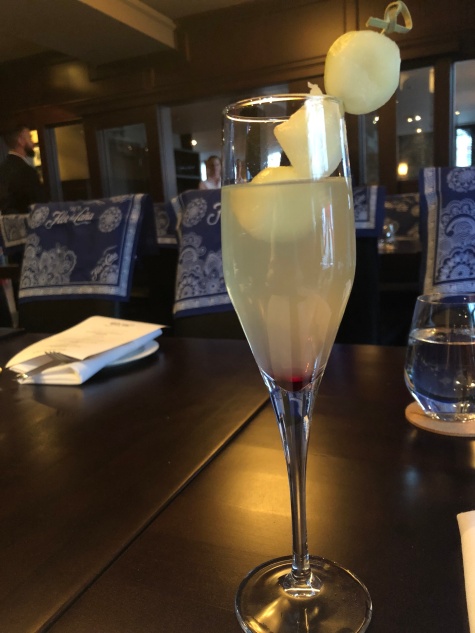
The evening began with a Mombotombo Fizz, a cocktail named after an active volcano in Nicaragua (yes, there was a bit of a theme to the evening’s festivities). In addition to Flor de Caña’s 4 Year Extra Seco, the cocktail included rum-soaked melon balls, which is now officially my new favourite way of eating melon. Of the four drinks that we tasted at this event, three were cocktails. This was done, I suspect, to show that rum can be used for more than just highballs and can impart the same complexity as other spirits more commonly used on the cocktail scene. While this approach was largely successful, I can’t help but think that a more conventional tasting, where we would have been allowed to taste through a sampling of the Flor de Caña product line neat, would have better showcased the different characteristics of this distillery’s rums and how they change over time. I suppose I will have to do my own research on that at a later date.
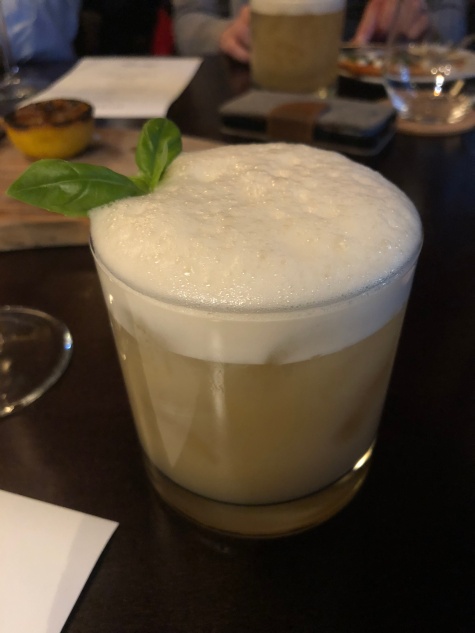
Next up was a more savoury cocktail, the Basil Sour, which contained the Flor de Caña Gran Reserva 7 Year Rum, along with basil syrup, pineapple shrub (!!), coriander bitters and meringue. Although I typically consider rum to be a sweet beverage, the Basil Sour was far more herbal, as its name would suggest, and paired well with a variety of tasty morsels prepared by Murrieta’s. If you’re looking to find a cocktail to pair with a lamb meatball, this does the trick.
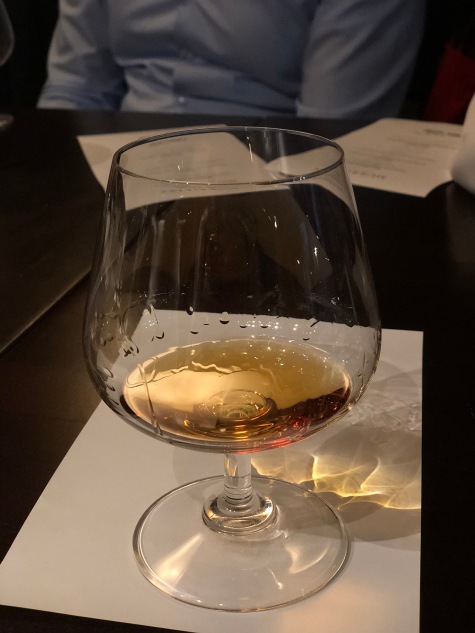
The highlight of the night for me was the Flor de Caña 18 Year, which was served neat in a large snifter. It was here that I got my first real sense of what Flor de Caña rum is all about, as those in attendance were taken on a five-senses journey. Visually, the colour was a golden amber that defied my usual notions of rum as either white or dark, and the legs that remained in the glass after swirling were extended and remarkable. On the nose, the rum presented scents of burnt sugar (as you would expect) and crème brûlée (the custard part) along with vanilla, banana and caramel. Now, before we tasted it, Jeffrey Meyers had us conduct a little experiment. I placed my hand over the glass and tilted until a little bit of liquid touched my hand. I was then instructed to rub my hands together and was surprised to find that my hands were not at all sticky. To quote Jeffrey, I had just used the most expensive Purell ever and provided tactile proof that there was no sugar added to the rum in question (not that I would have banked on distilled molasses being not remotely sticky, but here we are).
It was the palate, however, that most surprised me. There were the expected flavours of caramel, spice, vanilla and nuts, along with an oak and bitterness that comes from the freshly-charred barrels in which the rum was aged. Where the 18 Year defied my expectations was in its sweetness. I generally expect rum to be sweet, not in some small measure due to the fact that it is made entirely from sugar cane. However, the 18 Year’s sweetness was more akin to the way an oatmeal cookie is sweet rather than the way a square of caramel or cake frosting is sweet, complex and layered and understated. I was actually reminded a bit of cognac when I first tasted it, which I found to be intriguing and which certainly opened up the occasions during which I could see myself enjoying a glass or two. OK, admittedly, that’s only four senses; I’m not sure how one hears a beverage. I remain impressed.
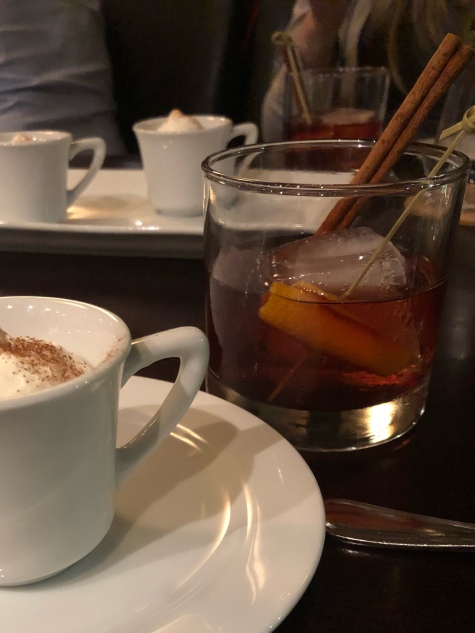
We ended the night with a Rum & Raisin made of Flor de Caña 12 Year, Port, spiced orchard syrup, plum & vanilla bitters and a cinnamon stick. The drink went well with the dessert we enjoyed; however, having just had the opportunity to try the 18 Year neat, I can’t help but wonder how the 12 Year would have paired with the dessert on its own and how it would have differed from its older brother. Ambassadors: let your wares speak for themselves!
I always relish the opportunity to expand my alcohol horizons and it was a pleasure to do so surrounded by like-minded individuals. If you think that rum is only for mixing with Coke in a highball, I can now assure you that it is not.


Leave a comment